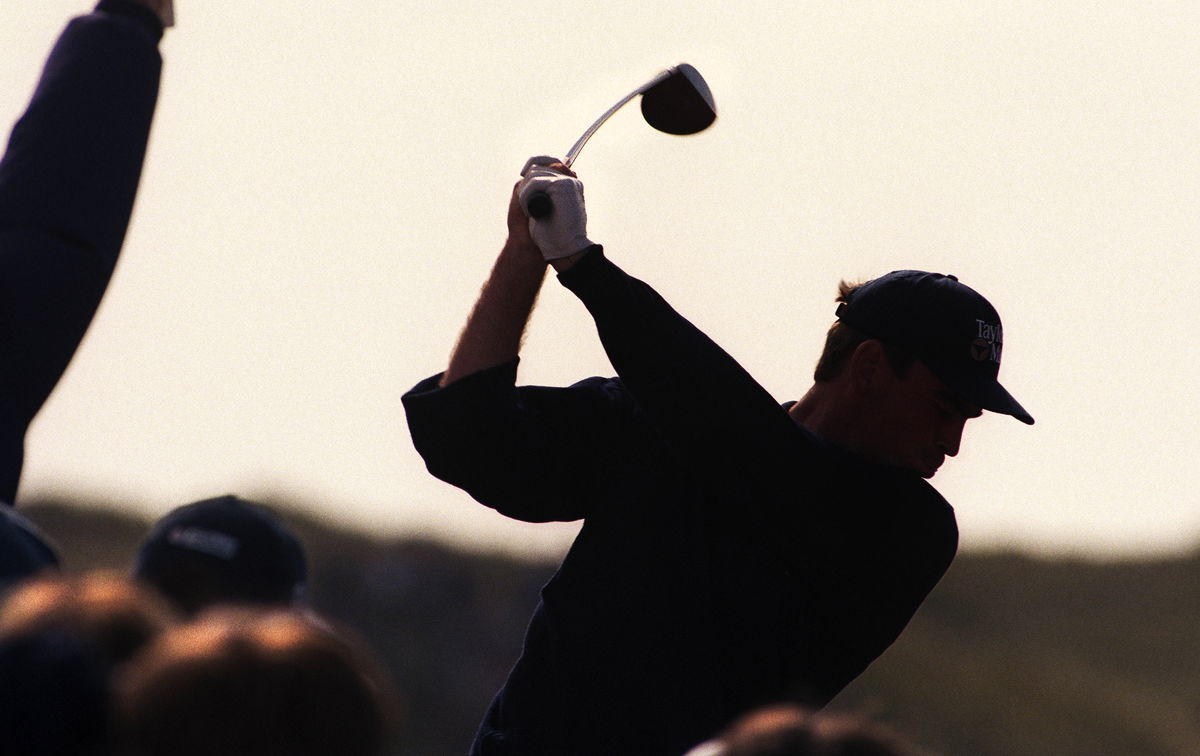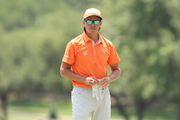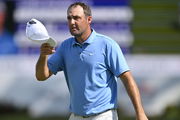
Getty
Silhouetted golfer on the tee during the 127th British Open Golf at Royal Birkdale GC in Southport 16th-19th July 1998. (Photo by David Ashdown/Getty Images)

Getty
Silhouetted golfer on the tee during the 127th British Open Golf at Royal Birkdale GC in Southport 16th-19th July 1998. (Photo by David Ashdown/Getty Images)
“F*** this place,” Shane Lowry muttered after missing a short putt on the back nine Friday at Oakmont. Oakmont’s reputation precedes it. It’s never been a welcoming host, but this year, it’s crossed the line into downright brutal. Ultra-narrow fairways, brutal rough, pins tucked with surgical cruelty, and greens that repel good putts like they’re allergic to par—the USGA has dialed the difficulty to eleven. The result? Players are having meltdowns. Clubs snapping. Lockers dented. And microphones are picking up more profanity than praise. Add in shifting pin positions and firming conditions, and you’ve got players melting down faster than the afternoon sun can bake those already glassy greens.
Watch What’s Trending Now!
Wyndham Clark, the defending U.S. Open champion from 2023, was one of them. After initial rounds of 75 and 73, he missed the cut—and reportedly damaged multiple lockers in frustration. Earlier this year, he also struck a T-Mobile sign at the PGA Championship in a separate outburst, which he later apologized for.
It didn’t take long for the golf world to react. That’s when Graeme McDowell, the 2010 U.S. Open winner, took to X. He pointed to 2016 as a prime example of Oakmont testing players’ limits. That year, Shane Lowry blew a four-shot lead and left a practice round early in frustration, later admitting he didn’t know how to play the course. Rory McIlroy slammed the USGA’s controversial ruling on Dustin Johnson’s ball as “amateur hour,” while Jordan Spieth called it “a joke.” Between the setup and the conditions, Oakmont in 2016 became known as much for player meltdowns as for the golf itself.
ADVERTISEMENT
In the comments, Ian Poulter, a Ryder Cup firebrand and longtime USGA critic, chimed in: “I have inflicted severe locker destruction through the years at US Opens and paid my fines. Generally they have been our temporary build lockers. Not members lockers. Not that that’s an excuse. Generally it’s been when I’ve felt the USGA have pushed the limits over the edge 🤦🏼♂️” And he’s not wrong. Poulter’s had dust-ups with the USGA dating back nearly a decade. In 2015 at Chambers Bay, he blasted the “embarrassing” green conditions.
I have inflicted severe Locker destruction through the years at US Opens and paid my fines. Generally they have been our temporary build lockers. Not members lockers. Not that that’s an excuse. Generally it’s been when I’ve felt the USGA have pushed the limits over the edge 🤦🏼♂️
— Ian Poulter (@IanJamesPoulter) June 15, 2025
Clark’s actions may not be excusable—but as Poulter and McDowell made clear, they’re far from uncommon. When major champions start defending destructive moments as understandable reactions, it’s not just a player problem anymore. It’s an institutional one. And the truth is, this isn’t new. For years, players have been sounding the alarm about U.S. Open setups that toe the line between demanding and downright demoralizing.
ADVERTISEMENT
Top Stories
Tiger Woods’ Treatment of Caddies Set Him Apart from PGA Tour Rivals, Confesses Steve Williams

Rickie Fowler Comes Clean on Health Issue Stopping Him from Playing PGA Tour Events

LIV Golf Signs a Deal With PGA Tour’s 20-Year-Long Partner in Another Shocking Move

DP World Tour to Stand Apart from PGA Tour’s Harsh Stance on Pros’ Involvement in LIV Golf Event – Report

Scottie Scheffler Leaves Fans Stunned After Signing Deal with Multi-Million Dollar Giant

When “toughest test” becomes too much
The U.S. Open has long prided itself on being golf’s ultimate test, but according to many players, the U.S. Open 2025 may have pushed things too far. With rough reportedly five inches deep and greens slick enough to make a marble sweat, frustration has echoed across fairways and press tents alike. Critics haven’t held back, calling the setup “a lottery of luck” and suggesting it’s more about “avoiding disaster” than showcasing skill.
ADVERTISEMENT
Even Tiger Woods, no stranger to pressure, once fired at the USGA after the brutal 2004 Shinnecock Open, saying, “This is not supposed to be how golf is played.” Ian Poulter called Chambers Bay’s 2015 greens “disgraceful,” while Camilo Villegas simply labeled that same setup “the worst I’ve ever seen.” In 2022, Jon Rahm described the setup as “borderline unplayable.” And now in 2025, even calm-headed Scottie Scheffler has called the course “absolutely relentless.”
At Oakmont, social media lit up with fans and analysts blasting the unfairness of ultra-fast greens, penal bunkers, and unpredictable bounces. Some players, like Patrick Reed, have embraced the madness with dry humor—“If you get in the rough, good luck”—but others worry it’s not just silly, but unsafe. Hall of Famer Nancy Lopez warned the deep rough could actually lead to injuries, with players swinging full throttle to escape heavy lies. In the eyes of many, the USGA’s “tough” has crossed into the absurd.
ADVERTISEMENT
ADVERTISEMENT
ADVERTISEMENT

